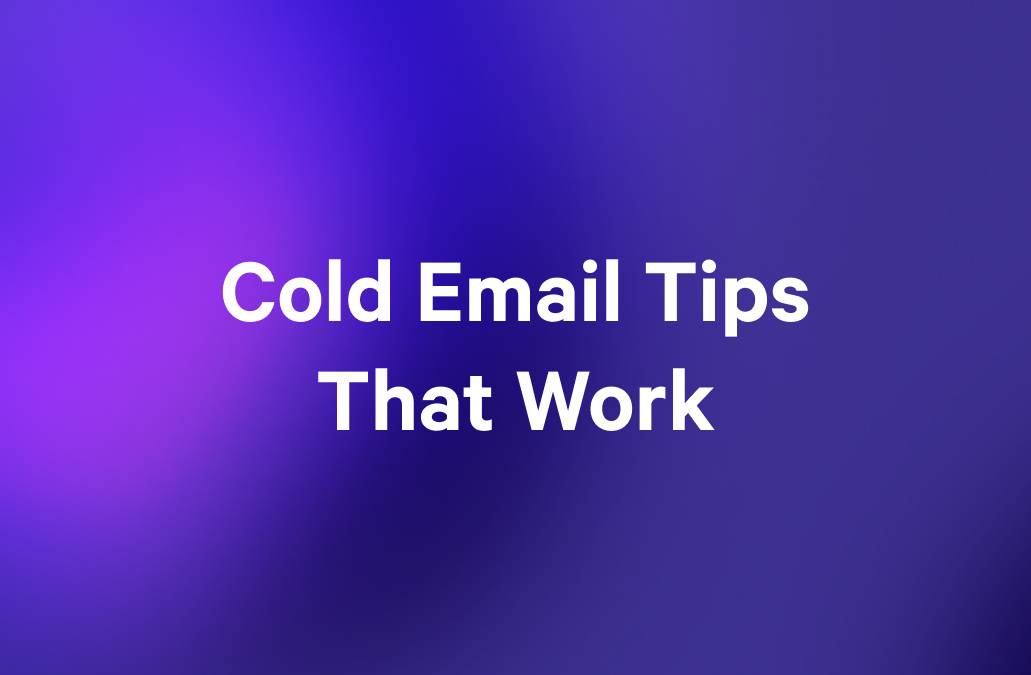Cold calling is more than just a numbers game; it's about effective communication and strategic planning. With the right approach, you can significantly increase your success rate, turning cold calls into valuable meetings.
This detailed guide, drawing on expert insights and proven techniques, provides a comprehensive playbook for booking over 10 meetings per week by cold calling.
But first…
What is cold calling?
Cold calling is a sales technique where sales reps contact potential customers who have not previously expressed interest in the offered products or services. This approach is often characterized as an interruption to the prospect's day, making the initial contact crucial to the call's success. The primary goal of cold calling is to open a dialogue and establish a relationship that could lead to a sale or appointment.
Does cold calling work?
Despite being a traditional sales method, cold calling remains effective when executed with the right strategy. Modern data suggests that while cold calling has a low average success rate—around 2%—skilled sales reps can significantly improve these odds.
For example, using specialized techniques and frameworks, some reps achieve success rates of 30% or higher, converting cold calls into meaningful sales opportunities. This variation in success underscores the importance of approach, preparation, and the ability to engage the prospect meaningfully from the first contact.
The psychology of cold calling
The success of cold calling can often be attributed to understanding and leveraging psychological principles:
Reducing pressure
Successful cold callers minimize the sales pressure felt by prospects. Techniques that focus on being helpful rather than pushing a sale can reduce defensiveness and foster a more receptive environment for dialogue. This concept of reducing pressure by detaching from immediate sales goals encourages a more genuine conversation and will be elaborated upon in the section on executing the call.
Creating rapport
Employing humor and relatability can quickly build rapport. Engaging prospects with light-hearted comments that resonate with their business experiences can lead to a release of oxytocin, enhancing trust and connection. This approach not only makes the call more enjoyable but also distinguishes the caller from less tactful approaches.
Permission-based openers (PBOs)
Starting the conversation by asking for permission to proceed respects the prospect's autonomy and increases their willingness to listen. This strategy sets a professional tone and will be covered in greater detail in the section about practical call execution.
Empathy and relevance
Demonstrating a deep understanding of the prospect's current challenges or recent achievements personalizes the call and grabs their interest. Techniques for researching and referencing relevant business contexts will be detailed later, highlighting how to maintain engagement throughout the sales conversation.
By incorporating these psychological insights into cold calling strategies, salespeople can enhance their ability to connect with prospects and improve the overall success of their calls. Further details on implementing these techniques will be explored below.
Before the cold call
Before picking up the phone, there are several steps you can take to ensure you're fully equipped to make a strong impression and maximize your chances of success.
This phase of preparation helps personalize the call and demonstrates your professionalism and genuine interest in the prospect's needs.
Research the prospect
Company Website and Newsroom
The company's official website is a treasure trove of useful information. Pay special attention to the Newsroom or Press Release section, as companies often post updates about new initiatives, changes in direction, or achievements here. This information can provide valuable context for your call, showing that you are up-to-date with their latest developments.
LinkedIn profiles
Your cold calling target: Review the LinkedIn profile of the person you plan to call. Look for details about their current role, recent posts, and professional achievements. Understanding their responsibilities and interests can help you tailor your conversation to resonate with their goals and challenges.
Their manager: If you can infer who their manager is, also check this person’s LinkedIn profile. This can give you additional context about the department’s priorities and the managerial style they operate under, which might influence your prospect's business concerns and responsiveness.
Key executives: Examine the profiles of key executives at the company. This will help you understand the leadership’s vision and priorities, which could be crucial in higher-level strategic discussions. Insights gleaned here can be used to align your pitch with the company's broader strategic goals. If you use a sales tool like Apollo or Zoominfo, they will often highlight these individuals in their company information pane.
Company financials: If dealing with a publicly traded company, review their latest earnings reports and financial statements. These documents can provide a wealth of information about the company's financial health and strategic priorities. You can use AI tools like ChatGPT to summarize key points from dense financial reports, making it easier to understand and discuss relevant topics during your call.
Industry news
Stay informed about the latest trends and news in the prospect’s industry. Regularly reading industry-specific publications and news sites can help you speak knowledgeably about the environment in which the company operates. This ongoing practice ensures that you can discuss how your products or services can address current industry challenges or capitalize on emerging opportunities.
The research phase before a cold call should be efficient and targeted, typically taking between 5 to 10 minutes. This duration allows you to gather enough information to personalize your approach without consuming too much time. However, the depth of your research might vary based on your go-to-market strategy and the specific requirements of your sales role.
For instance, if you manage a large territory or a high volume of potential contacts, you may have 1-2 ‘go to’ sources of information and may not even leave your dialing solution. Conversely, if your territory is more concentrated on key high-value accounts, spending more time to understand each prospect is critical to avoid burning your book of business.
Executing the cold call
Master the first 30 seconds
1. Establishing the right intent
The initial seconds of a call determine whether a prospect stays on the line. It's crucial to focus on being helpful rather than immediately pushing for a sale. This approach reduces defensiveness and establishes a foundation for open dialogue.
💡 Technique:
- Start with a mindset of curiosity and assistance. Visualize each call as an opportunity to solve a problem or improve the prospect's situation.
- Avoid aggressive sales pitches in the first 30 seconds; instead, focus on creating a rapport.
Permission-based openers (PBOs)
PBOs are essential for setting a respectful and professional tone. They acknowledge the interruption of a cold call and request the prospect's consent to proceed, which can increase their willingness to listen.
📔 Cold calling script example:
- "Hello [Name], I’m calling from [Your Company]. I’ve got some insights on [industry-specific solution] I think you’d find valuable. Do you have a moment to discuss them?"
- "Hi [Name], I’ve noticed your company is expanding into [market or product line]. I have a few ideas about handling [common problem] more efficiently. Could we discuss this briefly?"
Why this works: Using PBOs not only respects the prospect's time but also positions you as a considerate and professional salesperson, distinguishing you from less tactful callers.
Build immediate relevance
Connecting the call to current events or pain points
Quickly demonstrating your understanding of the prospect's industry, recent news about their company, or their specific business pain points helps to grab their interest and keeps the conversation relevant.
💡 Technique:
- Research the prospect's business and sector beforehand to identify current challenges or recent achievements. Use this information to personalize your call.
- Mention specific details or events that are relevant to their business to show that your call is well-researched and pertinent.
📔 Cold calling script example:
- "I noticed your recent expansion into the Asia market, which is exciting. Many of our clients face [specific challenge] in that region. We’ve developed some strategies that have proven effective. Could this be of value to you?"
- "Your latest product launch was quite innovative. We've been helping companies streamline [related process] which could further enhance your project's success. Can we set aside some time to discuss this?"
Why this works: By tying your call to something immediately relevant to the prospect, you significantly increase the chances of keeping their interest and opening up a more detailed conversation.
Engage with insight and humor
Using humor to break the ice
Starting a call with a light-hearted comment can disarm the prospect, making the atmosphere less formal and more conducive to an open conversation.
💡 Technique:
- Use humor judiciously; it should be appropriate and not undermine the professionalism of the call.
- A humorous remark can be a great way to reflect your familiarity with the industry's quirks, which shows empathy and understanding.
📔 Cold calling script example:
- "I see your company has set a new record in [industry-specific achievement]. Should I just congratulate you now or send over a trophy?"
- "I had to ask, with all those mergers in your industry, are you guys going for a monopoly or just trying to keep things interesting?"
Building a connection through insight
Following up a humorous opener with insightful comments demonstrates depth and professionalism, quickly transitioning from breaking the ice to building credibility.
📔 Cold calling script example:
- "On a more serious note, with your recent merger, integrating systems can be quite challenging. We've got some proven solutions that address exactly that. Is this something you're grappling with?"
- "Jokes aside, our data shows that companies in your sector can enhance [specific metric] by [X%]. I’d love to share how we can replicate this success for you."
Deepen the conversation with effective questioning
Question Stacking Technique
The Question Stacking Technique is essential in engaging prospects in a way that not only uncovers their challenges but also builds a compelling case for why they should consider a meeting. This technique revolves around strategically deepening the conversation through targeted, context-rich questioning that leads the prospect to reveal pain points actively.
💡 Tip:
- Start with contextual openers: Begin by framing the conversation around a context that is relevant to the prospect’s industry or current business challenges. This sets the stage for a focused dialogue and shows that you understand their environment.
- Employ a layered questioning strategy: Initiate with broad, open-ended questions that invite the prospect to speak about their general business operations or recent changes. Gradually narrow down to more specific inquiries based on their initial responses, homing in on areas where they exhibit concern or dissatisfaction.
- Encourage the revelation of pain points: Guide the conversation in a way that encourages prospects to admit challenges without feeling vulnerable. Use your understanding of common industry problems to anticipate and relate to their issues, making it easier for them to open up.
📔 Cold calling script example:
- Initial contextual question: "I see that your industry has been moving towards automation rapidly. Can you share how this shift is affecting your day-to-day operations? What's been the biggest challenge?"
- Follow-up question: "You mentioned challenges with integrating new technology. How are these affecting your team's productivity or customer satisfaction? Are there specific aspects that are more problematic?"
- Deep dive question: "Given these challenges with technology integration, how effective have your current solutions been in addressing these issues? Have there been any solutions or strategies you’ve considered but not implemented yet?"
The Question Stacking Technique effectively engages prospects by progressively deepening the dialogue. This method demonstrates genuine interest in their specific challenges and builds credibility by highlighting your understanding of industry issues.
Why this works: As prospects articulate their problems, a sense of urgency is created, naturally guiding the discussion towards actionable solutions and making the scheduling of a follow-up meeting a logical progression.
The soft pitch approach
Gently introducing your solution
Once you've engaged the prospect and identified their needs, introduce your solution in a way that aligns with the information they've shared.
💡 Tip:
- Position your product or service as a potential solution to the problems discussed, but keep the tone informative and consultative rather than purely sales-oriented.
- Highlight specific features or benefits of your solution that directly address the issues the prospect has articulated.
📔 Cold calling script example:
- "Considering the challenges you've outlined with [issue], our [product/service] has specific features designed to overcome these. Would it be helpful if I explained how these work in more detail?"
- "It sounds like [specific problem] is a major concern. Our clients have found that [solution] not only alleviates this but also improves [related benefit]. Shall we explore how this could work for you?"
Closing the cold call
Confidently suggest next steps
After a productive conversation, suggest a follow-up action that continues the momentum of the dialogue.
💡 Tip:
- Propose a specific time and date for a follow-up meeting. Be direct yet polite in your suggestion, demonstrating respect for the prospect's schedule.
- If possible, send a calendar invite during the call to lock in the meeting time.
📔 Cold calling script example:
- "Based on our discussion, I believe there's a strong potential for [solution] to make a significant impact on [problem]. How about we schedule a detailed walkthrough next Tuesday at 2 PM?"
- "Let’s arrange a time for me to show you [product/service] in action. I’m available next Friday morning; does that fit into your schedule?"
By clearly suggesting next steps and proposing a specific time for further discussion, you not only demonstrate your professionalism but also enhance the likelihood of converting the call into a formal meeting.
How to book 10 meetings each week by cold calling
To achieve the goal of booking 10 meetings per week through cold calling, a structured approach to managing call volumes and daily scheduling is essential.
Here's how to organize your targets:
- Calculate baseline call volume: First, calculate the minimum number of calls needed based on your conversion rate. If your conversion rate is 5%, and your goal is to book 10 meetings per week, you need to make 200 calls per week (10 meetings / 0.05).
- Add a buffer: Include a buffer of 20-30% to accommodate fluctuations in your conversion rate and other unforeseen variables such as market changes or seasonal impacts. For example, with a 25% buffer on 200 calls, you would plan for 250 calls per week.
- Weekly scheduling with balanced call days: Divide your weekly call target into a daily plan that varies in intensity, which can help manage energy levels and ensure sustained productivity. Consider planning three "heavy" call days and two "lighter" call days.
📔 Example:
- Heavy call days (Monday, Wednesday, Friday): Target 60 calls per day.
- Lighter call days (Tuesday, Thursday): Aim for 35 calls per day.
This distribution allows for intense calling periods interspersed with lighter days for administrative tasks, follow-up on prospects, or refining strategies.
Plus, you should:
- Aim for continuous improvement: As your proficiency in making effective calls improves, aim to enhance your meeting booking rate. This not only boosts efficiency but may also allow you to reduce the total number of calls needed over time while still meeting or exceeding your weekly meeting targets.
- Track and analyze: Regularly monitor the outcomes of your calls, paying special attention to those that result in a booked meeting. Identify successful patterns or techniques.
- Refine your pitch and timing: Adjust your approach based on feedback and analysis. High performing reps will experiment with different times of day and try different combinations of cold calls, email follow up, and LinkedIn messages to maximize their effectiveness.
- Incremental conversion goals: If your conversion rate improves (e.g., from 5% to 6%), adjust your call volume accordingly. At a 6% conversion rate, you would need approximately 167 calls to reach 10 meetings (down from 200).
By structuring your call schedule to include days of varying intensity and focusing on continuous improvement in your calling techniques, you can more effectively reach your target of 10 meetings per week. This approach not only help you achieve your goals as a sales rep but also fosters skill development and efficiency improvements in your cold calling strategy.
Final thoughts
By implementing these strategies consistently and tailoring your approach to each prospect, you'll be well-equipped to exceed your target of booking 10 meetings per week. Each call is an opportunity to refine your skills and approach, gradually building a robust pipeline of prospects eager to engage with you.



